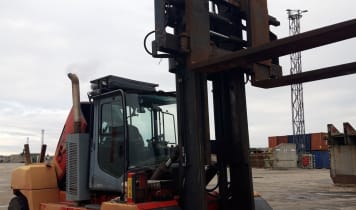Diesel forklifts are operated in practically all branches of industry in which loads on pallets must be moved, for example, the loading and un-loading in a factory hall or warehouse. Diesel forklifts consist of a frame on three or four wheels. They commonly have a rear steering mechanism to enable a tight turning radius. Normally the turning radius corresponds to the length of the vehicle.
Four-wheeled forklifts are less inclined to tip over, due to their center of gravity.
- In-house transport of loads on pallets
- Main field of application is on external grounds
Quality Great offers Personalized To maximize stability, there is no suspension of the wheels or axels. Stabilizers and vibration dampeners are common in four-wheeled forklifts to minimize swaying under heavy loads. Specialized tires for forklifts take over the function of a suspension system. For comfortable operation, the operator sits in a suspended seat, adjustable according to body weight. The combustion engine of the machine is located in back and serves as an additional counterweight during the lifting of heavy loads.
Diesel forklifts are generally driven by a machine operator, using foot pedals and hand levers. A steering wheel controls the driving direction. A lifting framework with a fork or another type of load bearing platform is hydraulically operated. Various types of extension equipment can be attached to the hydraulic lifter. LINDE Diesel forklift in use Certain models of diesel forklifts are steered with a joystick. Modern diesel forklifts are outfitted with additional touch screen steering, displaying various parameters and enabling further functions. There are
outdoor forklifts, side loaders, reach trucks, and four or
multi-way forklifts that can move in all directions, including diagonally.











